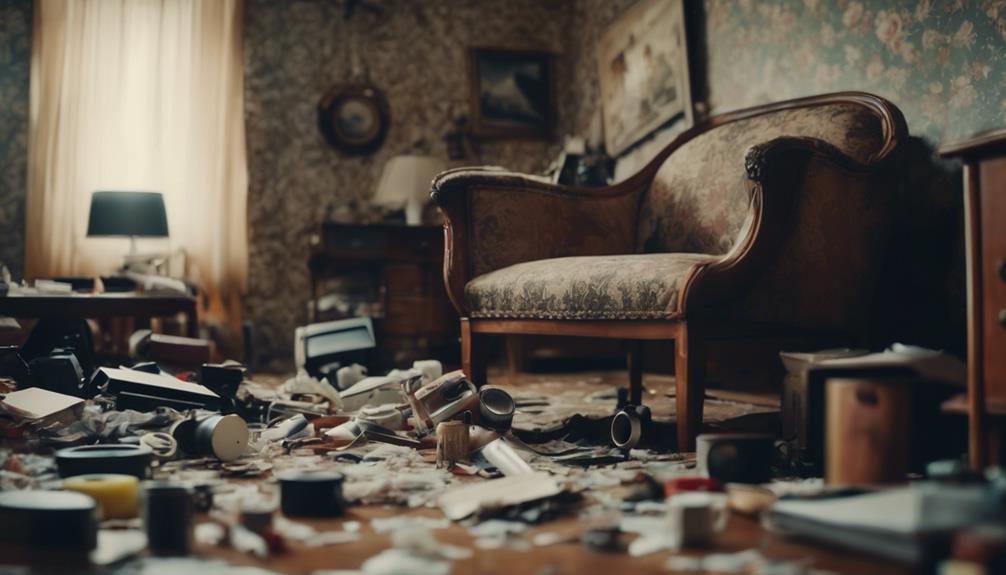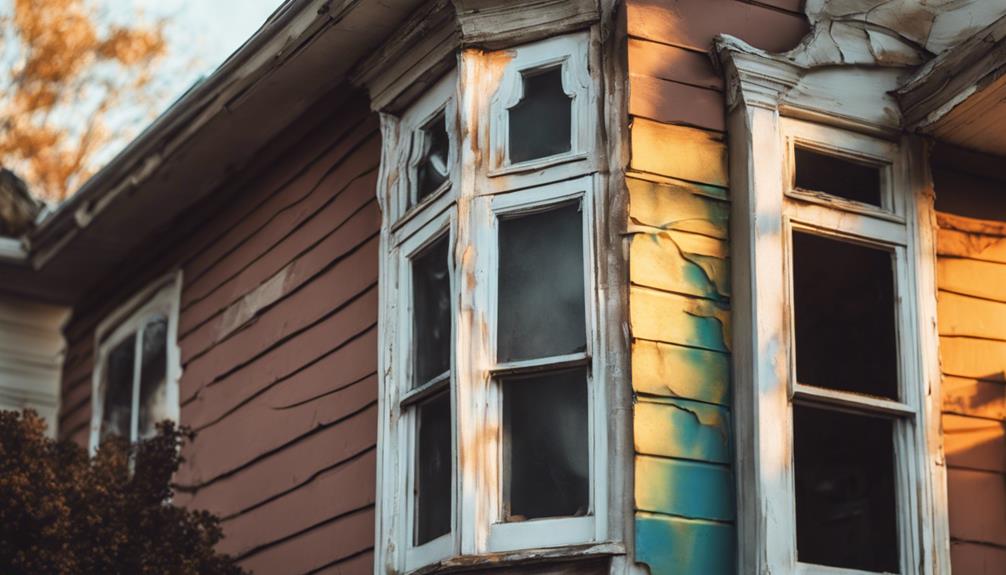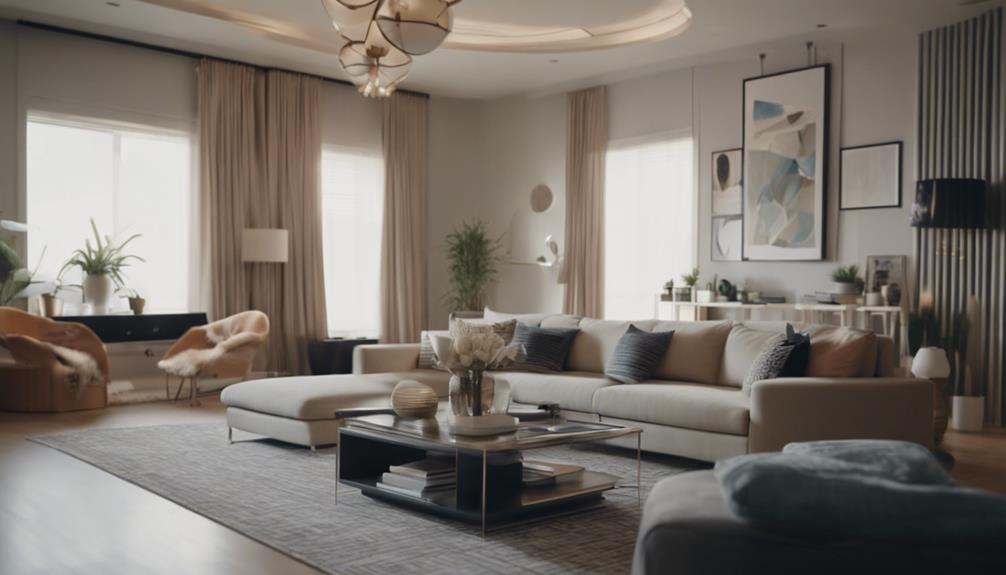Starting on interior design is like starting on a thrilling adventure! You'll immerse yourself in a world where creativity meets technical know-how, and business skills play an important role. Expect challenges in juggling different styles and managing demanding schedules. Continuous learning is key to success. From mastering client relationships to balancing project requirements, there's always something new to learn. Financial stability can be tricky, but strategies can help. Proficiency in CAD software, space planning, and project management are essential skills. Begin by developing problem-solving skills and building a strong portfolio. Success in interior design is a journey of growth and discovery!
Key Takeaways
- Highly competitive industry with a need to showcase creativity and skills.
- Balancing different design styles and preferences is crucial.
- Continuous learning and adapting to trends are essential.
- Business acumen is key for success in interior design.
- Managing demanding schedules and irregular work hours is a challenge.
Industry Competition and Challenges

Navigating the competitive landscape and overcoming challenges in the interior design industry is crucial. In the world of interior design, competition among design firms is fierce. To stand out, you must showcase your interior design skills, creativity, and ability to exceed client expectations. Juggling client work from various projects adds complexity to your role, requiring you to balance different design styles and preferences simultaneously.
Designers in this industry are constantly challenged to innovate and adapt to the ever-changing trends. Staying ahead means continuous learning and honing your craft. Successful interior designers not only possess a keen eye for aesthetics but also have the business acumen to thrive in this competitive field.
To succeed in the interior design industry, demonstrating your unique approach, attention to detail, and passion for creating stunning spaces is vital. By mastering these skills and delivering exceptional results, you can overcome the challenges and thrive in this dynamic and demanding profession.
Demanding Work Hours

Interior designers often endure long and irregular work hours to meet project deadlines and satisfy client expectations. The experience of interior designers frequently involves late nights and weekends dedicated to ensuring that projects are completed on time. Meeting with clients, conducting site visits, and overseeing installations can further extend their work hours, making the profession demanding in relation to time commitment.
With the need to balance multiple projects simultaneously, interior designers find themselves managing through demanding work schedules. Flexibility and adaptability are essential skills for interior designers to effectively handle the challenges that come with the long and irregular work hours in this field.
Despite the demanding nature of the work hours, many interior designers find fulfillment in creating beautiful spaces and meeting their clients' needs, making the effort worthwhile. So, if you're considering a career in interior design, be prepared to put in the time and effort required to excel in this dynamic industry.
Need for Continuous Learning
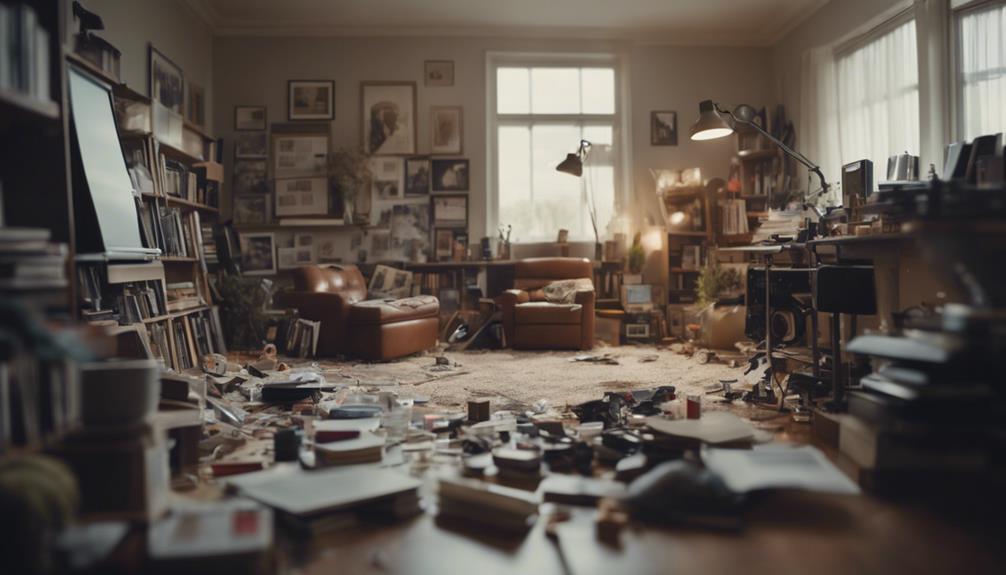
Embracing continuous learning in interior design guarantees that professionals remain competitive in a rapidly evolving industry. In the world of design, staying current with trends, technologies, and materials is vital for success.
Continuous learning allows designers to explore new software, techniques, and industry standards that keep them at the cutting edge. By investing in professional development through workshops, seminars, and courses, interior designers can refine their skills, expand their knowledge, and adapt to changing client preferences effectively.
Learning about sustainability, accessibility, and ergonomics is also essential for creating functional and environmentally friendly designs that meet the needs of today's conscious consumers. Making a commitment to continuous learning not only enhances expertise but also ensures relevance in the dynamic field of interior design.
Client Acquisition and Project Management
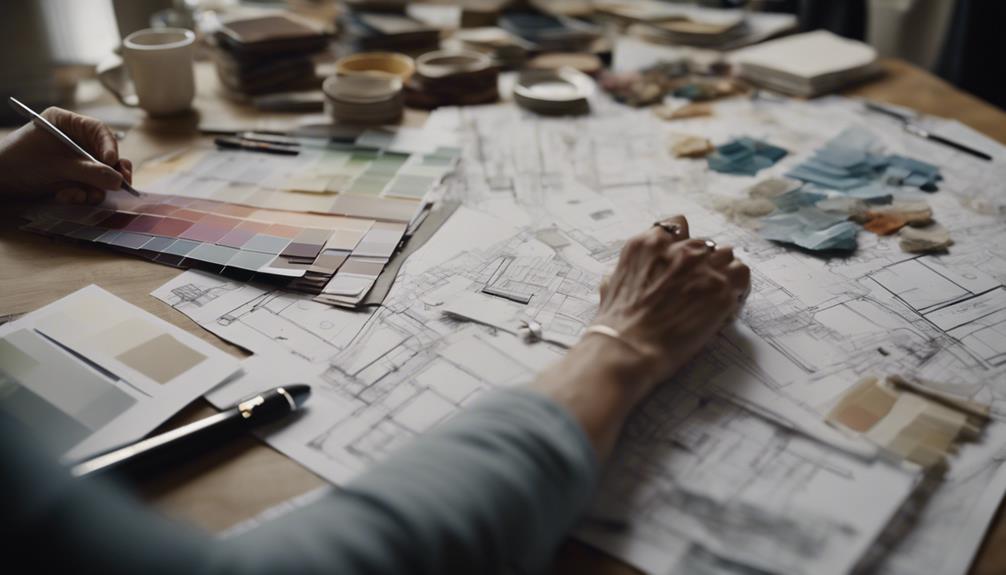
To excel in interior design, mastering client acquisition and project management is essential. Client acquisition involves showcasing your communication skills, networking abilities, and a solid portfolio to attract potential clients. In a competitive field with diverse client preferences, standing out is vital. Successful interior designers understand the importance of building relationships and effectively conveying their unique style and expertise to secure projects.
Project management in interior design is about juggling various elements like timelines, budgets, and resources to guarantee a smooth process from concept to completion. It requires setting clear goals, establishing timelines, and maintaining open communication channels with clients to deliver projects successfully. Balancing client expectations with project requirements is a critical skill in managing interior design projects. By understanding client needs and preferences while staying true to your design vision, you can create spaces that exceed expectations and leave a lasting impression.
Mastering both client acquisition and project management is essential for a flourishing career in interior design.
Financial Stability Concerns

When considering a career in interior design, it's important to be aware of potential financial challenges. Factors like irregular project timelines and payment schedules can impact your income stability.
Budgeting skills, supplementing income with side projects, and building a strong client base are essential strategies to navigate these fluctuations successfully.
Income Potential Challenges
Exploring the interior design industry can present aspiring professionals with significant challenges in achieving financial stability, particularly in the early stages of their careers. Here are some income potential challenges you might encounter along your career path:
- Building a client base takes time, impacting your financial stability.
- Strategies to boost earnings over time are important for overcoming income challenges.
- The hours required to grow in interior design can affect your financial stability.
- Selling big ideas effectively to clients is essential for improving your income potential.
- Balancing the time investment needed to cultivate a successful career with maintaining financial stability can be a significant challenge.
Navigating these hurdles requires dedication and strategic planning as you progress in the field of interior design.
Budgeting for Freelancers
Managing the challenges of financial stability as a freelancer in interior design involves careful budgeting to account for variable income streams and irregular project timelines. It's important for freelancers to track expenses, plan for taxes, and set aside savings for lean periods in the industry.
Understanding cash flow and managing client payments are essential aspects of budgeting for financial stability. Freelancers should consider setting project-based fees, negotiating contracts, and diversifying their client base to mitigate financial risks.
Creating a detailed budget with clear goals and projections can help freelancers navigate the financial challenges. This approach guarantees you can sustain your Design Studio during fluctuations, leverage your work experience effectively, and thrive in the competitive landscape of interior design businesses.
Job Market Fluctuations
Finding your way through the interior design job market can be challenging due to its tendency to fluctuate based on economic conditions and client demand. Financial stability concerns may arise due to inconsistent project flow and income variability.
Interior designers in the United States may face challenges in securing long-term projects, impacting their financial security within the design field. To navigate these fluctuations, consider strategies like understanding market trends and diversifying services.
Building a strong client base and offering diverse design services can help mitigate financial instability and guarantee a more stable income flow. Stay proactive and adaptable to the market demands to enhance your financial stability in the dynamic world of interior design.
Technical Skills and Experience Requirements
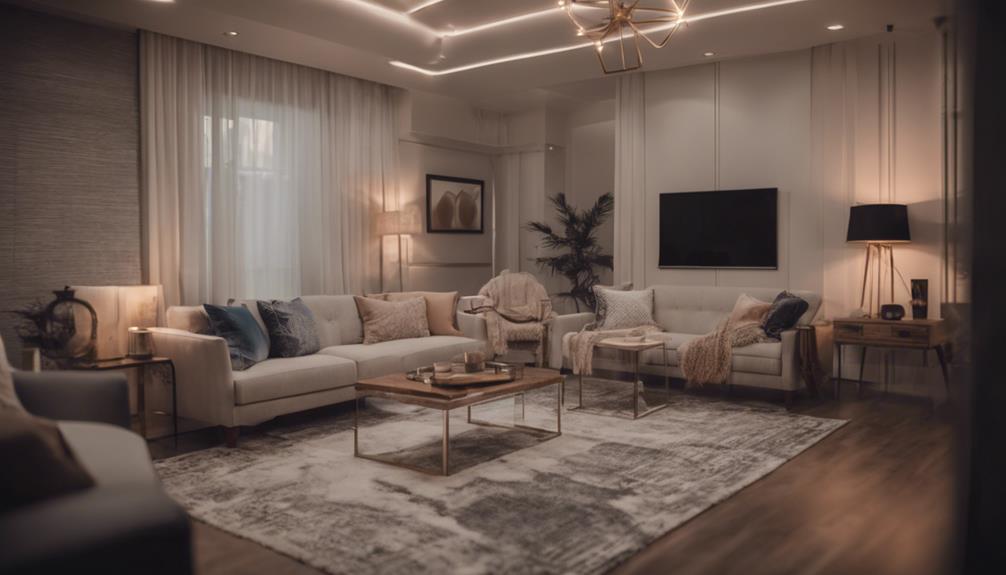
Interior design demands a range of technical skills like CAD proficiency, spatial planning, and material knowledge. Experience plays a crucial role in grasping client requirements, managing projects effectively, and adhering to industry norms.
Overcoming early career challenges, such as acquiring these skills and gaining experience, is essential for aspiring interior designers.
Skills Required
Possessing a blend of technical skills and practical experience is essential for success in interior design. To excel in this field, you need to focus on honing specific skills and gaining valuable experience. Here are some key skills required for interior design:
- Proficiency in CAD software is vital for creating detailed designs.
- Gain experience in space planning to optimize the functionality of different areas.
- Understanding building codes is necessary to guarantee designs meet safety regulations.
- Join a mentorship program to learn from experienced professionals in the industry.
- Develop skills in drafting, rendering, and project management to handle diverse design projects effectively.
Experience Level
Acquiring a diverse set of technical skills and accumulating practical experience is crucial for successfully maneuvering through the challenges of interior design. Whether you're considering enrolling in one of the best interior design schools, pursuing interior design certification, or simply dreaming of becoming an interior designer, honing your craft is key.
Entry into the field can be competitive, with employers often looking for candidates proficient in CAD software and experienced in project management. Without prior work experience, landing a job as an entry-level interior designer may pose challenges. To overcome this hurdle, focus on building a strong portfolio that showcases your technical skills and project management capabilities.
Path to Success in Interior Design

Starting on the journey to success in interior design requires unwavering dedication and a thirst for continuous learning. To pave your way to becoming a successful interior designer, consider the following tips:
- Develop Your Problem-Solving Skills: Interior design is all about creativity and finding solutions. Whether you're redesigning a small apartment in New York or a spacious home in the suburbs, the ability to solve problems creatively will set you apart.
- Seek Mentorship Opportunities: Learning from experienced professionals can provide valuable insights and guidance on maneuvering the industry. Don't hesitate to reach out to established designers for advice and mentorship.
- Stay Updated on Industry Trends: The world of interior design is constantly evolving. Keeping up with the latest trends, materials, and technologies will help you stay relevant and innovative in your designs.
- Build a Strong Portfolio: Showcase your best work through a well-curated portfolio. Highlighting your unique style and creativity will attract potential clients and set you apart from the competition.
- Network and Collaborate: Building strong relationships within the industry can open doors to new opportunities. Collaborating with other designers, architects, and industry professionals can lead to exciting projects and growth in your career.
Frequently Asked Questions
Is Interior Design Hard to Learn?
Interior design can be challenging to learn, especially without prior experience or formal education. Understanding technical skills like CAD software and design principles adds complexity. Building codes and safety standards further increase the learning curve.
Creativity, planning, and material knowledge are all essential aspects. Continuous learning and staying updated on trends are crucial for success. With dedication and practice, you can navigate the complexities of interior design and thrive in this multifaceted field.
Is Being an Interior Designer Hard?
Being an interior designer can be challenging but rewarding. It involves creativity, client communication, project management, and staying updated on design trends.
Overcoming obstacles like acquiring clients and ensuring financial stability are part of the journey. However, with passion, dedication, and continuous learning, you can thrive in this competitive field.
Success in interior design is more about perseverance and honing your skills rather than relying solely on talent. Embrace the challenges and enjoy the journey!
Is Interior Design a Hard Skill?
Interior design encompasses a variety of skills, from technical know-how to creative problem-solving. Managing tasks like client communication and project timelines requires multitasking abilities. Staying updated on trends and technologies is key to delivering innovative designs.
While challenging, success in interior design is achievable with dedication and passion. By mastering these skills and staying current in the field, you can navigate the complexities and create exceptional designs that stand out.
Is Interior Design a Lot of Math?
Interior design involves a fair amount of math. You'll use fractions, ratios, and geometry to measure rooms, plan spaces, and select furniture sizes. Understanding scale and balance is key for creating harmonious designs.
Luckily, there are software tools to help with complex calculations. So, while math is definitely part of interior design, it can also be a fun and rewarding aspect of the creative process.
Conclusion
To sum up, interior design can be challenging but rewarding. By staying dedicated, continuously learning, and honing your skills, you can navigate the competitive industry and achieve success.
With hard work, perseverance, and a passion for design, you can overcome the obstacles and thrive in this dynamic field. Remember, success in interior design isn't just about talent, but also about determination and a drive to constantly improve.
Embrace the journey and enjoy the process!
